
Propulsion and Power Research
Scope & Guideline
Advancing the Frontiers of Propulsion and Power.
Introduction
Aims and Scopes
- Fluid Dynamics and Heat Transfer:
Research on fluid flow characteristics, heat transfer mechanisms, and thermal management systems, particularly in the context of propulsion systems and power generation. - Nanofluids and Advanced Materials:
Investigation into the properties and applications of nanofluids and other advanced materials to improve thermal performance, combustion characteristics, and overall efficiency in engineering systems. - Numerical Simulations and Computational Fluid Dynamics (CFD):
Utilization of numerical methods, including CFD simulations, to predict and analyze the behavior of complex fluid flows and thermal phenomena in propulsion and power systems. - Energy Optimization and Exergy Analysis:
Focus on optimizing energy use and analyzing exergy in various systems to enhance performance and reduce environmental impact. - Innovative Propulsion Systems:
Exploration of novel propulsion technologies, including hybrid systems, ion propulsion, and scramjet engines, to advance aerospace and automotive applications. - Magnetohydrodynamics (MHD):
Research on the behavior of electrically conducting fluids in magnetic fields, with applications in propulsion and energy generation. - Thermal Management Systems:
Development of advanced cooling and thermal management strategies for high-performance engines and power systems to ensure reliability and efficiency.
Trending and Emerging
- Deep Learning and AI in Fluid Dynamics:
The application of deep learning and artificial intelligence techniques for predictive modeling and optimization in fluid dynamics is increasingly prominent, indicating a shift towards data-driven research. - Hybrid Propulsion Systems:
Research on hybrid propulsion systems, combining various technologies such as electric and conventional engines, is on the rise, driven by the need for more sustainable and efficient solutions. - Magnetohydrodynamics (MHD) Applications:
The exploration of MHD phenomena in propulsion and energy systems continues to gain attention, particularly in the context of advanced cooling and energy generation technologies. - Nanofluid Applications in Thermal Systems:
There is a growing interest in the use of nanofluids for enhanced thermal performance across various applications, reflecting the trend towards advanced materials in engineering. - High-Performance Turbomachinery:
Research focusing on the design, optimization, and performance of high-efficiency turbomachinery is trending, as industries seek to improve energy conversion efficiencies. - Sustainable and Alternative Fuels:
The shift towards sustainable and alternative fuels in propulsion systems is increasingly significant, with research addressing the challenges and opportunities these fuels present. - Complex Flow Dynamics in Aerospace Applications:
Emerging studies on complex flow dynamics, including vortex dynamics and thermal management in aerospace applications, signify a trend towards more sophisticated analyses.
Declining or Waning
- Traditional Combustion Processes:
Research related to conventional combustion processes has decreased, possibly due to the growing interest in alternative fuels and advanced combustion technologies. - Low-Temperature Heat Exchangers:
Studies focused on low-temperature heat exchanger technologies have waned, as researchers shift towards high-efficiency systems and novel materials. - Static Aeroelasticity Studies:
The focus on static aeroelasticity in propulsion systems has diminished, with fewer publications addressing the traditional aerodynamic interactions in favor of more dynamic and complex analyses. - Basic Fluid Mechanics Principles:
Research centered on fundamental fluid mechanics principles appears to be declining, as the journal increasingly emphasizes advanced applications and computational methods. - Simplistic Thermodynamic Models:
The use of simplistic or classical thermodynamic models is less common, reflecting a trend towards more complex and realistic modeling approaches.
Similar Journals
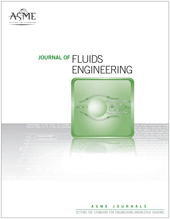
JOURNAL OF FLUIDS ENGINEERING-TRANSACTIONS OF THE ASME
Exploring the Depths of Fluid DynamicsJOURNAL OF FLUIDS ENGINEERING-TRANSACTIONS OF THE ASME, published by the renowned American Society of Mechanical Engineers (ASME), stands as a pivotal platform for disseminating cutting-edge research in the field of mechanical engineering, specifically focusing on fluid mechanics and its diverse applications. With an established history dating back to 1897, this journal features research that pushes the boundaries of knowledge and technology in areas such as fluid dynamics, thermal engineering, and hydrodynamics. Although it is not an open-access journal, it maintains rigorous peer-review standards, ensuring the publication of high-quality scholarly articles that contribute to the academic and professional community. In the latest rankings, it holds a respectable position within the Q2 category of mechanical engineering journals, reflecting its significant impact, as evidenced by its Scopus rank of #204 out of 672, placing it in the 69th percentile. Researchers, professionals, and students alike will find this journal to be a vital resource for the latest developments and innovative insights in fluids engineering.

Aerospace
Fostering Collaboration in Aerospace ExcellenceAerospace is a premier open-access journal published by MDPI, established in 2014 and dedicated to the dynamic field of aerospace engineering. With an impressive Q2 ranking in the 2023 category of Aerospace Engineering, this journal is a vital resource for researchers, professionals, and students interested in advancements and innovations in aerodynamics, avionics, propulsion, and more. Operating from Switzerland, Aerospace provides a platform for the dissemination of high-quality research articles and reviews, contributing to the ongoing dialogue in the aerospace community. This journal not only enhances visibility through its open access model but also ensures that critical knowledge is freely available, fostering collaborative efforts and inspiring the next generation of aerospace engineers. With a Scopus ranking of #60 out of 153 in the Aerospace Engineering category, it plays a significant role in shaping the future of aviation and space exploration.
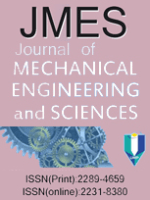
Journal of Mechanical Engineering and Sciences
Connecting Global Minds in Mechanical Engineering ResearchThe Journal of Mechanical Engineering and Sciences (ISSN: 2289-4659, E-ISSN: 2231-8380), published by UNIV MALAYSIA PAHANG, is a prominent open access journal established in 2011, dedicated to advancing the field of mechanical engineering and associated sciences. Covering a wide array of topics from industrial manufacturing processes to computational mechanics, the journal serves as a vital platform for researchers, professionals, and students to disseminate innovative findings and methodologies. With impressive Scopus rankings, including a place in the 60th percentile for Industrial and Manufacturing Engineering, the journal holds a significant position among its peers, facilitating global academic discourse. Located in Kuantan, Pahang, Malaysia, the journal emphasizes accessibility and collaboration within the engineering community, encouraging submissions that contribute to both theoretical and applied aspects of mechanical engineering.

Journal of Nanofluids
Innovating Through Nanofluid Research and ApplicationsJournal of Nanofluids, published by AMER SCIENTIFIC PUBLISHERS, is a leading international journal dedicated to the burgeoning field of nanofluid technology which bridges the areas of fluid dynamics and nanotechnology. With an ISSN of 2169-432X and E-ISSN of 2169-4338, this journal has established itself as a valuable resource for researchers and professionals in Mechanical Engineering and Chemical Engineering, particularly in the domains of fluid flow and transfer processes. Its prestigious standing is reflected in the 2023 Scopus rankings, positioning it in the 79th percentile for Mechanical Engineering and the 78th percentile for Fluid Flow and Transfer Processes. Although coverage has been discontinued in Scopus since 2021, the journal maintains a Q2 category ranking in both relevant fields, emphasizing its commitment to high-quality and impactful research dissemination. This journal aims to foster innovation and collaboration among scientists and engineers worldwide, providing a platform for groundbreaking research, reviews, and discussions on nanofluids, their properties, and applications. As an essential addition to the library of any researcher or student vested in advanced fluid dynamics, the Journal of Nanofluids serves as a pivotal conduit for advancing knowledge and technology in this exciting and evolving field.
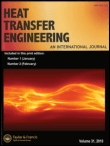
HEAT TRANSFER ENGINEERING
Pioneering research in thermal dynamics and engineering solutions.HEAT TRANSFER ENGINEERING is a leading international journal published by Taylor & Francis Inc, dedicated to advancing the field of heat transfer and thermal engineering. With a strong focus on the key aspects of Condensed Matter Physics, Fluid Flow and Transfer Processes, and Mechanical Engineering, this journal covers a comprehensive range of topics from experimental studies to theoretical analysis, aiming to foster innovative research and practical applications. Since its inception in 1979 and continuing through 2024, the journal has established itself as an essential resource for researchers and industry professionals alike, reflected in its solid rankings within Scopus—holding a Q2 quartile classification in multiple engineering disciplines. Although not open access, the journal ensures broad accessibility through institutional subscriptions, making cutting-edge research readily available. With its rigorous peer-review process and commitment to quality, HEAT TRANSFER ENGINEERING plays a crucial role in shaping the future of thermal management solutions and engineering practices.
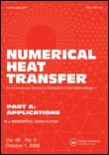
NUMERICAL HEAT TRANSFER PART A-APPLICATIONS
Pioneering research at the intersection of theory and application.NUMERICAL HEAT TRANSFER PART A-APPLICATIONS, published by TAYLOR & FRANCIS INC, serves as a premier outlet for cutting-edge research in the domains of numerical analysis and condensed matter physics. With an ISSN of 1040-7782 and an E-ISSN of 1521-0634, this esteemed journal has steadily maintained its influence in the academic community since its establishment in 1989, continuing its publication into 2024. Currently ranked in the Q2 quartile for both Condensed Matter Physics and Numerical Analysis, it stands as a vital resource for researchers committed to advancing computational methodologies and applications. The journal's Scopus rankings reflect its growing impact, particularly in mathematics, where it is placed in the top 26% of its category. Although not an open-access journal, its comprehensive research articles and detailed applications foster innovation and collaboration, making it essential for professionals and students aiming to deepen their understanding of thermal transfer phenomena through numerical techniques. This journal not only bridges theory and application but also propels forward the field of heat transfer.

INTERNATIONAL JOURNAL OF HEAT AND FLUID FLOW
Contributing to Excellence in Mechanical Engineering ResearchFounded in 1979, the INTERNATIONAL JOURNAL OF HEAT AND FLUID FLOW is a premier publication in the fields of mechanical engineering, fluid dynamics, and heat transfer, published by Elsevier Science Inc. With an impressive impact factor and ranking in the Q1 category for Mechanical Engineering and Q2 for Condensed Matter Physics and Fluid Flow and Transfer Processes, this journal is highly regarded for its rigorous peer-reviewed articles that contribute significantly to the advancement of knowledge in these critical areas. Researchers, professionals, and students can access cutting-edge studies that explore the intricacies of thermal and fluid systems, ensuring they stay at the forefront of scientific exploration. The Scopus rankings further affirm its role as a leading source of impactful research, with significant placements in crucial academic categories. Join an active community of scholars committed to innovation and excellence in the exploration of heat and fluid flow phenomena.
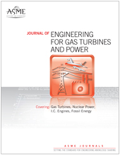
JOURNAL OF ENGINEERING FOR GAS TURBINES AND POWER-TRANSACTIONS OF THE ASME
Advancing the Future of Energy EngineeringJournal of Engineering for Gas Turbines and Power - Transactions of the ASME, published by the esteemed American Society of Mechanical Engineers (ASME), is a leading interdisciplinary journal dedicated to advancing the fields of energy engineering, aerospace, nuclear energy, and mechanical engineering. With an impressive history dating back to 1960 and continuing its contributions through 2024, this journal boasts a Q2 ranking in multiple engineering categories, reflecting its strong impact on both academia and industry. Although not an open-access journal, it provides invaluable insights and research findings that cater to the needs of professionals, researchers, and students alike. The journal's ISSN is 0742-4795 with an E-ISSN of 1528-8919, ensuring widespread visibility in the global academic community. Indexed in Scopus, it ranks notably within its fields—21st in Nuclear Energy and Engineering and 51st in Aerospace Engineering—underscoring its relevance and contribution to critical technological advancements. Researchers in this domain will find the journal a vital resource for innovative studies, practical applications, and the latest developments related to gas turbines and power generation.

FDMP-Fluid Dynamics & Materials Processing
Transforming Insights into Innovations in Materials ScienceFDMP-Fluid Dynamics & Materials Processing, published by TECH SCIENCE PRESS, stands as a significant contribution to the field of materials science, specifically focusing on the intricate relationships between fluid dynamics and material processing. With an ISSN of 1555-256X and an E-ISSN of 1555-2578, this journal offers an open-access platform where researchers can disseminate their work broadly, promoting collaboration and innovation among professionals and students alike. Established in 2007 and continuously evolving through to 2024, the journal is classified in the Q4 category of materials science, ranking at #347 out of 463 in the Scopus database, signifying its niche yet crucial role in the academic community. By focusing on the dynamic interplay between fluid behavior and material properties, FDMP addresses contemporary challenges and advances in material processing techniques. The journal plays a pivotal role for academics and industry professionals seeking to push the boundaries of knowledge and application in materials science.
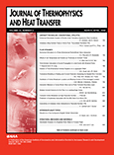
JOURNAL OF THERMOPHYSICS AND HEAT TRANSFER
Bridging Theory and Experiment in Heat TransferJOURNAL OF THERMOPHYSICS AND HEAT TRANSFER, published by the American Institute of Aeronautics and Astronautics, serves as a vital platform for the dissemination of cutting-edge research in the fields of thermophysics and heat transfer. With an ISSN of 0887-8722 and an E-ISSN of 1533-6808, this journal has been pivotal in enhancing our understanding of heat transfer mechanisms since its inception in 1987, continuing through 2024. It occupies a noteworthy position in various academic categories, boasting Q2 rankings in both Fluid Flow and Transfer Processes and Mechanical Engineering, reflecting its significant contribution to the engineering and physical sciences community. Although it currently does not offer Open Access options, the journal’s repository of rigorous peer-reviewed articles remains accessible to researchers, professionals, and students eager to expand their knowledge and apply innovative findings in aerospace, condensed matter physics, and planetary sciences. Emphasizing both theoretical and experimental approaches, the JOURNAL OF THERMOPHYSICS AND HEAT TRANSFER remains an indispensable resource for advancing the frontiers of engineering and applied sciences.